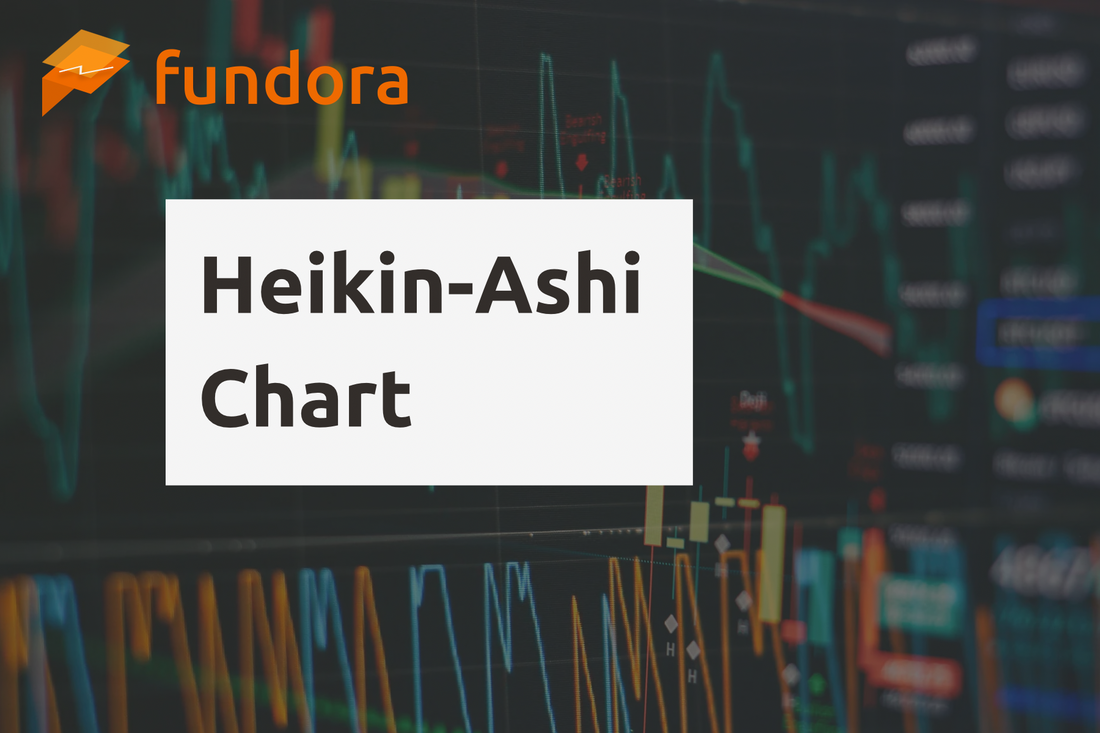
Heikin-Ashi Chart
Share
Heikin-Ashi Chart
Table of Contents
1. Overview
The Heikin-Ashi Chart is a modified version of the traditional candlestick chart designed to help traders identify market trends more easily. “Heikin-Ashi” means “average bar” in Japanese. Instead of simply displaying raw price data, it uses calculated smoothed prices to draw candles.
Because Heikin-Ashi removes much of the “noise” in price movement and emphasizes trend direction, it is especially popular with trend-following traders. Unlike regular candlesticks, each bar is calculated using prior price data, making it less sensitive to short-term fluctuations and better at highlighting the overall trend direction.
2. Structure of a Heikin-Ashi Chart
The Heikin-Ashi chart looks similar to a regular candlestick chart, but its calculation method is different. Each candle is calculated as follows:
- Open: The average of the previous candle’s open and close
- Close: The average of the current period’s open, close, high, and low
- High: The highest price of the current period
- Low: The lowest price of the current period
This calculation smooths the chart, highlights trends, and filters out noise compared to traditional candlesticks.
3. How to Use a Heikin-Ashi Chart
- Identifying trends
The Heikin-Ashi’s biggest strength is visualizing trends. A series of green bars indicates an uptrend, while a series of red bars indicates a downtrend. Trend changes are clearly signaled by color changes, making reversals easy to spot. - Entry and exit timing
It helps determine how long a trend may last. For example, as long as green bars continue, traders can assume the uptrend is intact. When bars turn red, it may signal a sell entry or profit-taking point. - Trend-following strategies
When a trend is strong, Heikin-Ashi bars maintain consistent color. Frequent color changes suggest weakening trends or possible reversals.
4. Pros and Cons of Heikin-Ashi
Pros:
- Visually clear: By smoothing price action, trends become easier to see at a glance.
- Noise reduction: Small fluctuations are filtered out, highlighting significant market direction.
- Supports trend-following: Uptrends and downtrends are easy to track, making it useful for trend strategies.
Cons:
- Lagging effect: Because Heikin-Ashi is calculated from past data, it can be slow to reflect sudden reversals.
- Less effective in ranges: In sideways markets, colors often switch back and forth, making it harder to judge strength. In such cases, combining with other indicators is recommended.
5. Practical Examples
- Entry in an uptrend:
If bars turn green and continue green, the trend is considered strong, and traders may enter long. Positions can be held as long as the uptrend continues. - Entry in a downtrend:
If bars turn red and continue red, traders may consider short entries, holding until the trend reverses.
6. Key Considerations and Indicators to Combine
- Watch for sharp price moves
Since Heikin-Ashi is based on past data, it lags in responding to sudden price swings. To improve accuracy, it’s important to use other indicators like RSI or MACD alongside it. - Limits in range markets
Heikin-Ashi is less effective in sideways conditions. In such cases, combining with Bollinger Bands or support/resistance lines can improve accuracy.
7. Summary
Heikin-Ashi charts are excellent tools for clearly visualizing trend direction and strength, making them especially effective for trend-following. They remove short-term noise and highlight meaningful trends, making them beginner-friendly. However, they lag in fast markets and lose effectiveness in ranges, so combining with other indicators is recommended.
Using Heikin-Ashi effectively helps capture trends more efficiently. Combining it with other indicators further improves decision-making accuracy.
8. Frequently Asked Questions
Q1. What is the main difference between Heikin-Ashi and regular candlesticks?
A1. The main difference is calculation. Regular candlesticks display actual open, high, low, and close. Heikin-Ashi averages multiple values, including past candles, producing smoother charts and clearer trends.
Q2. What is the biggest advantage of Heikin-Ashi?
A2. Its biggest advantage is showing trend direction and strength at a glance. A series of green bars indicates an uptrend, while a series of red bars indicates a downtrend, making it highly effective for trend-following.
Q3. Are there any cautions when using Heikin-Ashi?
A3. Since it averages past data, signals lag behind actual market movement. Sudden reversals may appear late. Therefore, combining it with other indicators helps improve accuracy.